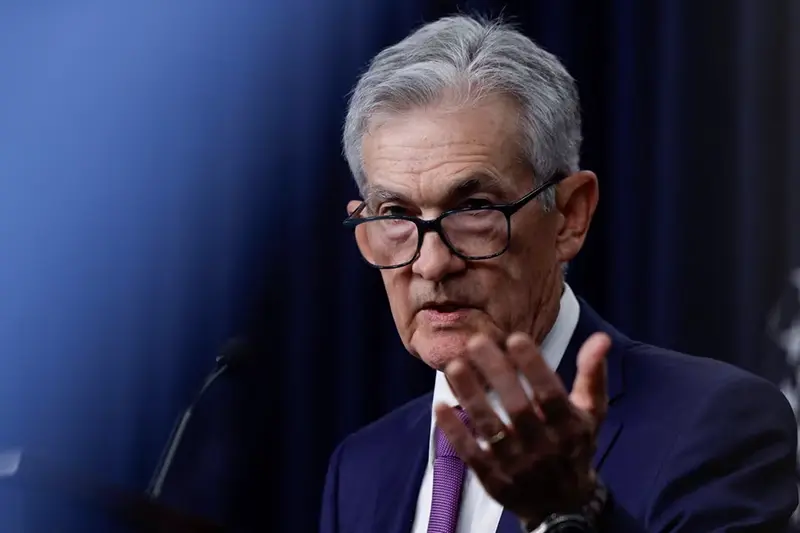January 31, 2024 – 1:27 PM PST

WASHINGTON (Reuters) – The Federal Reserve left interest rates unchanged on Wednesday but took a major step towards lowering them in coming months in a policy statement that tempered inflation concerns with other risks to the economy and dropped a longstanding reference to possible further hikes in borrowing costs.
The U.S. central bank’s latest policy statement gave no hint that a rate cut was imminent, and indeed said the policy-setting Federal Open Market Committee “does not expect it will be appropriate to reduce the target range until it has gained greater confidence that inflation is moving sustainably toward 2%,” the Fed’s inflation target.
“Inflation has eased over the past year, but remains elevated,” the Fed said in the statement after a two-day meeting, restating that officials “remain highly attentive to inflation risks.”
Speaking after the FOMC meeting in a press conference, Fed Chair Jerome Powell cautioned that the Fed’s struggle to lower inflation is not over, noting “we are not declaring victory, we think we still have a way to go.”
Powell later said he did not think officials would have that confidence in time to lower rates at the Fed’s next meeting in March.
“I don’t think it’s likely the committee will reach a level of confidence by the time of the March meeting” to lower rates, “but that’s to be seen,” Powell said, adding that a March cut is not the base case for policymakers.
The Fed’s interest rate target is “likely at its peak for this tightening cycle” and the Fed will likely cut rates “at some point this year,” Powell said, while adding it will still take time to see if the data supports an easing in monetary policy.
The FOMC statement language and Powell’s comments were a blow to investors who have been expecting rate cuts to start as early as March. The Fed’s benchmark overnight interest rate has been in the 5.25%-5.50% range since last July.
U.S. stocks fell while the dollar (.DXY) rose against a basket of currencies. U.S. Treasury yields also dropped.
“It is clear that the Fed are in no hurry to ease as rapidly as the market prices, with further promising inflation data still required in order to unlock the first rate reduction,” said Michael Brown, a market analyst at Pepperstone.
But the Fed also nodded to concerns about the employment side of its mission, and opened the door to lowering the policy rate if inflation, as expected, continues drifting lower in coming months.
The risks to meeting both the employment and inflation goals “are moving into better balance,” the central bank said, ending roughly two years in which its bias has been to moving rates higher and the risks seen as tilted towards those posed by escalating prices.
“In considering any adjustments to the target range for the federal funds rate, the Committee will carefully assess incoming data, the evolving outlook, and the balance of risks,” the FOMC said, referring to the central bank’s policy rate.
The Fed’s prior statement, issued on Dec. 13, had laid out the conditions under which it would consider “any additional policy firming,” language that excluded any consideration of rate cuts.
NO MENTION OF BANKING SYSTEM
The Fed’s statement made no reference to the health of the banking system for the first time since it was forced to shore it up last year after a string of regional bank failures. It also removed a reference to tighter financial and credit conditions as likely to weigh on economic activity, hiring and inflation.
While the statement stopped short of steering investors and the public towards the timing and pace of coming rate cuts, it did mark the current policy rate as the peak of an aggressive monetary tightening cycle that began in March of 2022 when price pressures were ramping up. Inflation peaked at a 40-year high several months later.
Inflation has now been running below the Fed’s target on a seven-month basis while U.S. economic growth and the job market have remained largely intact.
Economic activity “has been expanding at a solid pace,” the Fed said on Wednesday. Job gains “remain strong, and the unemployment rate has remained low.”
Fed officials did not issue new economic projections at their meeting this week. As of the Dec. 12-13 meeting, policymakers envisioned cutting the policy rate by 75 basis points over the course of this year, but they have been reluctant to commit to a start date until there is more data showing inflation has continued its downward trajectory.
Reporting by Howard Schneider; Additional reporting by Lindsay Dunsmuir, Michael S. Derby and Saqib Ahmed; Editing by Paul Simao and Andrea Ricci

